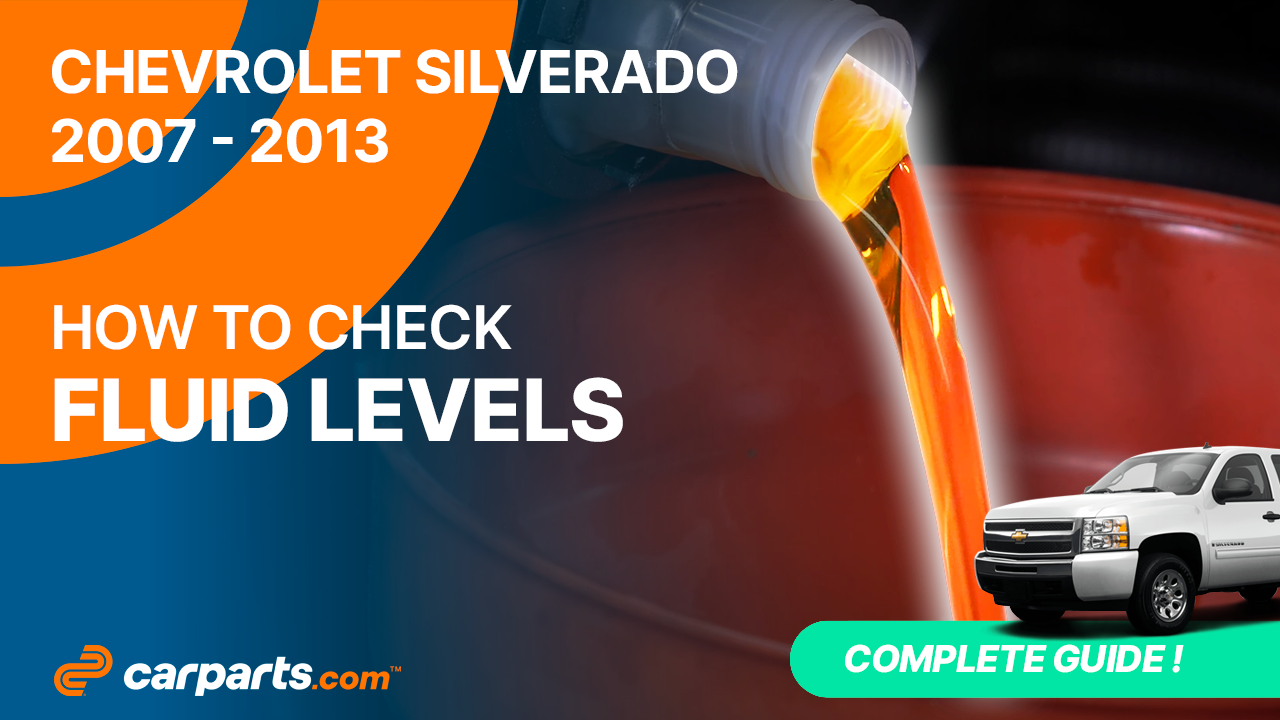
How to check the fluid levels 2007 – 2013 Chevrolet Silverado 2
To check the fluid levels on your Silverado 2 it couldnt’ be easier. You will be asked to motor oil, coolant, brake fluid as well as carry out a few other steps. You can carry out this tutorial of 6 chapters in 45 minutes. Bring your funnel and your measuring cup and let’s get started!
Duration
45 minutes
Number of steps
6
Difficulty out of 5
1
Average savings
$20
Parts You Will Need
Tools You Will Need
Step-by-Step Installation
Chapter 1:
Informations
Step 1/1
Your truck is a set of complex elements brought together in a single system. You don’t necessarily pay attention to it since it demands little or no attention from you. But be aware that a very small malfunction can have consequences that can cost you very quickly. Checking your levels, paying attention to simple components, can help you avoid or at least warn you about reaching disproportionate expenses. Checking the levels must be carried out with the engine cold and on level ground.

Chapter 2:
Motor oil
Step 1/5
Remove the oil dipstick from its sheath. Once out, wipe it off with a paper towel.


Chapter 2:
Step 2/5
Slide it back in. And finally take it out again. Look at the dipstick at the end.


Chapter 2:
Step 3/5
The dipstick has four markings at the end. This is this part that provides the image of the oil level in your engine. The latter will be considered optimal when it is located in the middle of this part. Be careful, it must not be above the maximum level. You risk engine failure.

Chapter 2:
Step 4/5
If you find that your level is low. Open the filler cap and add some oil. We are talking about a few ounces. No more.



Chapter 2:
Step 5/5
Insert your dipstick again, which you will have wiped beforehand, to check the new level. Repeat the filling operation until you reach the optimal level.



Chapter 3:
Coolant
Step 1/2
Coolant is as important as oil in an engine: VITAL. It is very important to check this level frequently. For this vehicle, we advise you to follow the manufacturer and product recommendations, to adapt coolant dilution to the specifications of your vehicle where necessary. Open the coolant reservoir cap.

Chapter 3:
Step 2/2
And fill the circuit with coolant. Be careful, again, to reach the maximum level indicated, but not to go above it. And especially never perform this with a hot engine.


Chapter 4:
Brake fluid
Step 1/2
The brake fluid reservoir also contains level graduations.

Chapter 4:
Step 2/2
When your level drops, this simply means wear on your brake linings. With the wear being compensated by the pistons, these come out further, and consequently enlarge the brake circuit, allowing it to accommodate more fluid. If the level is below the maximum, correct it by adding fluid.

Chapter 5:
Washer pump fluid
Step 1/1
Also take advantage of this time to add washer pump fluid to the tank, which helps keep the windshield and rear window clean. It is an important safety element to keep a clean, unobstructed field of vision.


Chapter 6:
Tips
Step 1/2
This operation must be carried out on a regular basis in order to keep your vehicle functioning optimally.
Chapter 6:
Step 2/2
Operation complete.